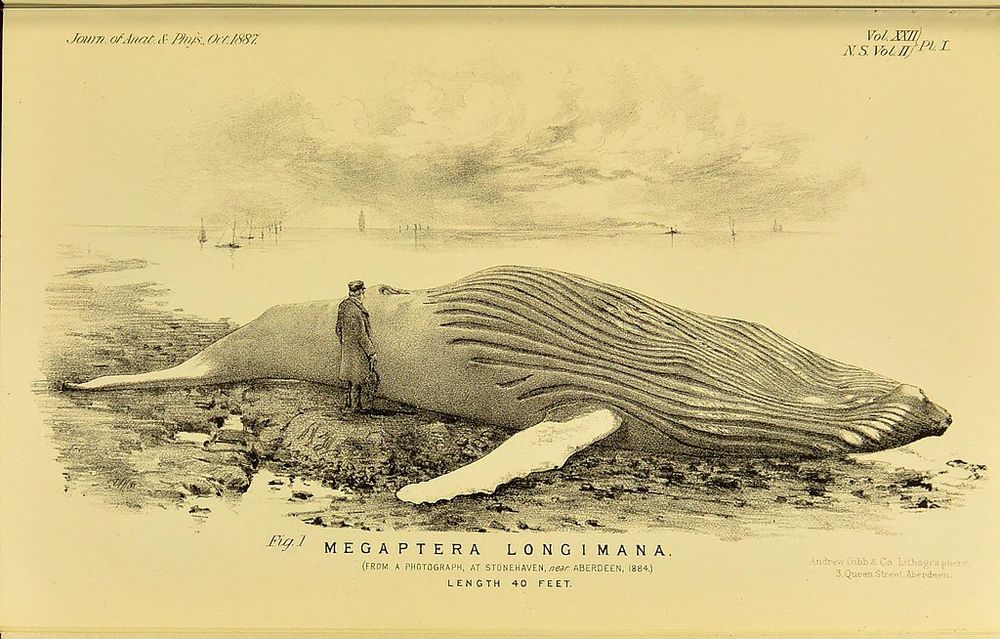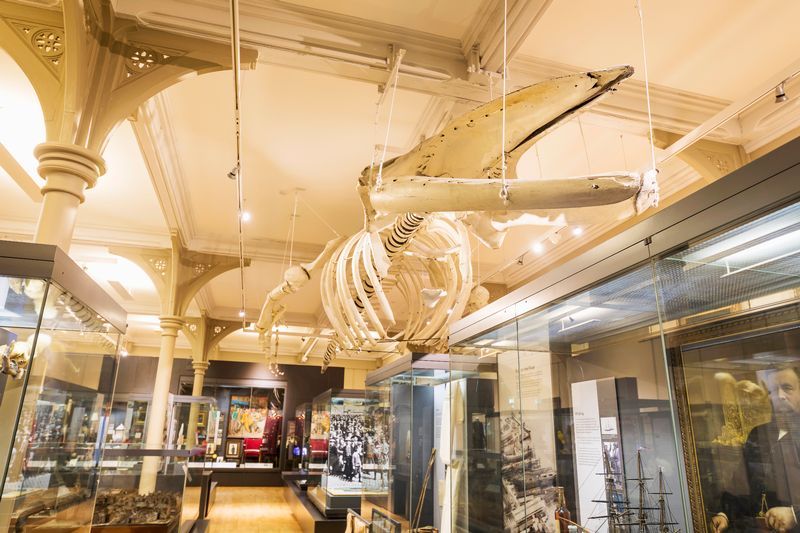But few locals had actually seen a whale.
The attraction to the river was the young herrings with which the firth was abound at that time.
A postcard of the Tay Whale.

Several times the whalers gave chase, but each time the humpback managed to escape.
Finally, on 31 December 1883, the quarry was struck by several harpoons.
Others piled up on whatever boat was available and began following the chase.

A week later, the whales carcass was found floating 6 miles off the shore.
Some fishermen from Gourdon towed the whale to Stonehaven and dragged it onto the beach.
The Tay Whale, from John Strutherss Memoir on the Anatomy of the Humpback Whale, Megaptera Longimana.

In the end, it was Woods who made the final bid, buying the 16-ton cetacean for 226.
Woods had the whale removed to Dundee, where he expected to put the monster on display.
Several thousand spectators gathered at the dock at the dead of night to watch its arrival.

The massive carcass was hauled to Woodss scrap yard in a bogie pulled by twenty horses.
These mishaps delayed progress, and the half-mile journey took 26 hours to complete.
Woods immediately placed the whale carcass on public display and charged visitors a shilling for a view.
The smell itself was beginning to keep visitors away.
When Struthers tried to reach out for the heart, his hands went through.
Struthers was invited back to complete the removal of the skull and the remaining bones.
The whale’s skeleton is now on display at the McManus Galleries in Dundee.
Skeleton of the Tay Whale at the McManus Galleries in Dundee.